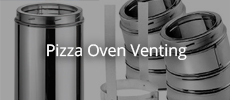No, not fibreglass, you need something that will melt at a very low temperature. Very fine polypropylene fibres do the trick. They melt at 160C. They are used primarily to reduce or eliminate early shrinkage cracking in standard concrete, but work well as burnout fibres for refractory materials. I use Sikafiber 48/19, which is a two pack
system.The fine fibres are the ones to use, don’t add the thicker ones to the mortar, but you can use them to increase flexural strength in a standard concrete mix. There are other brands who sell much the same product.
Announcement
Collapse
No announcement yet.
Northern Ontario oven build
Collapse
X
-
Mmmm... I went and finished filling in lower row today. Figures... Eyeroll...
I did the third row (course) today. Gaps were much better.
Where would I find these fibers? Are they the same that are added to resin to bulk it up?
Would cutting up fiberglass matting work?
Thank you for the input
Leave a comment:
-
I believe the reason the manufacturers of refractory mortar recommend using very thin mortar joints is because of the risk of steam spalling. In a thick mortar joint moisture has much further to travel which increases the risk of steam spalling. The addition of burnout fibres in the product is not included as it is with castable refractory. If you can access some fine polypropylene fibres and add these to your mortar mix they will do the job of allowing moisture to escape , providing a fair measure against steam spalling. I believe the same addition should also apply if using homebrew mortar. Only a very small amount is required, but mixing about double the normal time is required to get proper dispersal, as they tend to clump.Last edited by david s; 09-13-2021, 12:16 PM.
Leave a comment:
-
I had the same though about the joint gaps. What type of mortar do you use?
Leave a comment:
-
Made more progress this week. A bit of head scratching as I learn but coming along ok. I know mortar joints are supposed to be as thin as possible or around 1/8" but when I looked at many photos on line, the outer gap seems much larger. Does the 1/8" refer to the inside width? I did cut the second course bricks a bit to reduce the exterior gap a bit. I think the 3rd course will require both more cuts and side tapers. Going to work on an adapter or table sled to do that. Cutting the angles was not easy with my saw, despite being a 10" saw. Fun project so far.
I am a little worried about getting the opening form out. I put wedges under it to give me some vertical clearance but did not allow for side clearance. And I stapled it together. Should have screwed it. I will leave it till I have a few courses about it or I have to move it. I have an oscillating saw and I think that might be the ticket to getting it out.
Any input thus far would be appreciated.
Cheers,
Shawn
Leave a comment:
-
The shipment of materials arrived last week (bricks, insulation and mortar). Forms came off of the hearth. I laid out the ceramic tile base (found them at a restore). I have also cut the rigid insulation to fit the same as the tiles in the photo, and cut some of the fire bricks in half to get me going when I get back to camp. Not a lot of photos to show. Not much very exciting done but it is still moving forward. :-)
I built an IT tool last week. Will post pics later of that too.
Leave a comment:
-
Considering the steel in the slab, I would not be concerned about those tiny cracks. It would make sense to leave your side forms for at least 3 days (so you're all good there) and leave your supports under for a minimum of 2 weeks, preferably 3. Note that it will probably be fine, even if you only wait a week, but if you want to start building on top, right away, then leave the forms and supports (underneath) in place for 3 weeks.
- Likes 1
Leave a comment:
-
Thanks MarkJerling I did tie it all together. The hearth was poured yesterday. The pour went well but I have developed some cracks. I know that hairline cracks are normal but these look a little more serious than the ones that I have seen in garage floors or basements. Nothing I can do now but see how things go with more curing. I am sure there are threads with comments on this site on cracks so I will go look again to see what the recommendations were.
How long do you usually wait to remove the lower support tray? I won't get back to camp till Friday so I am thinking the side forms can come off then. That will be 4 days since the pour. I am fine with leaving the floor support as long as necessary but wondering what that might be?
I poked holes in the wet concrete as I forgot to add tubes for drainage, as I read in a thread, and it looks like those holes were the start of some of my cracks, but not all. Wish I had either thought to put tubes in first or drilled after it was hardened. Of course, it all gets covered and I did do the the 12 inch rebar grid so I am thinking it will be ok.....I hope.....
A new 10" tile saw arrived today and I will be picking up the bricks and everything tomorrow. :-) Hoping for a nice fall and see how far I can get. I don't expect below freezing temps till late September or October and those would only be at night. I can cover the project with a blanket and heat lamp or light bulb if it comes to that but sometimes we can go into November before seeing consistent night temps below freezing. If I recall correctly, the mortar is only susceptible to damage if frozen within a couple of days of being placed?
Leave a comment:
-
I tied my whole base, foundation, slab, walls and upper slab together with lots of rebar. Reason being, we live in earthquake prone area and I don't want the oven to fail in an earthquake.
Leave a comment:
-
At camp so internet is poor but a question.. I did the stand and left the Rebar a little high with the intent of tying them to the hearth Rebar. Yes or No? The plans show no Rebar above the stand and does not comment either way on it. I have seen some ovens built intentionally to isolate the hearth (floating) but wondering if it matters..? I would have thought it is better to tie it all together. Advice?
Leave a comment:
-
Shawnr ... I think you're barking up the right tree by thinking through these things ahead of time. I have seen other posts and I agree that.. in hindsight.. many ovens are lacking much needed space. Pizza prep takes more space than you realize, especially if you've got a crowd of intrigued guests milling about. And as you have already addressed the need to have a place for beer.. If you plan to have a prep area separate, then no big deal. One of the things I have discovered though is if you have the ability/area for space, then DO IT! Just like running electrical wiring.. you always want to error on the side of more than less.
- Likes 1
Leave a comment:
-
UtahBeehiver and @ Ope-dog
I will check with Alphatherm to see if they have sold bricks to builders of my size stove, when I order the bricks and supplies, hopefully tomorrow morning. I am thinking from the spreadsheet, fornoBravo kit specs and my calculations, 150 firebricks should do it.
We are planning on building a house around the oven but I thought we would have the tunnel for the vent landing exposed. I cannot find many images like this so I am thinking I am missing something. I was wanting that extra space beside the vent landing for plates, bowls, beers, etc but maybe I am missing a key point. Almost all of the "housed" dome ovens bring the sides up flush with the actual oven opening whereas I want to bring the front of the wall to a wall that follows the tunnel, leaving a bit more of the hearth exposed.
What don't I get? Maybe the space gained is not much so not worth it? On paper, it looks ok, but have not done scaled models or played with bricks.
Not much progress to report other than lots of head scratching. Slab is done and only been so far as to stack blocks. I needed flush blocks and half blocks so got them today. Hopefully, doing stand and forming hearth, starting tomorrow when I get back.
Leave a comment:
-
Hi Shawnr,
I ended up with a 32" diameter build and had initially ordered 220 full bricks and a few dozen splits. When I made my order, I had anticipated building a 36" oven, but alas.. brain farts were present and my hearth was only able to accommodate a 32". Given the fact that my build took place out in the country and is 30 min each way to/from the nearest big box store, I always tend to buy insurance parts of whatever project I have going on. Your build looks to be in a similar setup, and honestly I don't think you could ask for a better view than what your oven will have to offer!!
Long story short (too late, I know!) I have PLENTY of left over full bricks and splits. I had planned for 200 for a 36" and bought 20 "insurance" bricks. But this is mostly because the bricks, like my fireclay, were out of the way to anywhere I would ever want to go. (I'd much rather spend an extra $20 dollars up front and have excess than have to drive in an opposite direction and spend time and gas just to spend another $ 20 on materials.) 200 should be more than enough, even with your fair share of miscuts and misplans. But, if you plan to have a deeper or more elaborate arch, that will most likely take more brick. If you plan on doing a squirrel tail, that will also take a bit more brick. So if you want to be safe, 200 full bricks (4.5" x 9" ) and a dozen or two splits (the squirrel tail design will probably require some interesting sizes, etc.) will do you nicely.
Also, just to wrap up.. I am not a huge fan of the soldier course on the first row, however I AM a fan of getting the height added to the base. I opted to lay half cuts vertically for 3 courses PRIOR to bringing in the IT and starting my dome. If you choose to go this route, it will entail using about 1 extra course vs. the soldier course.
GREAT VIEW! Eager to see your progress!
- Likes 1
Leave a comment:
-
I built my oven before Deejayho built the spreadsheet so I can't say on the numbers also my bricks were much larger in dimensions than standard fire brick. I would get a 10% contingency amount to be safe. FYI, the FB eplans call out 180 for a 36" oven.
TC, I installed one midway up the dome and halfway into the brick to measure dome saturation. Would I do it again, no. I use a cheap infrared laser gun as well as watch the dome clearing for cooking. IMHO, not worth the effort to install.
Oven exposure to the elements is one of the big reasons for water ingress which leads wet insulation which means poor oven performance. Gulf did a hybrid build of the scissor truss over head structure yet you can see the dome oven as well Don't use FOIL anywhere. Some builders have installed a hitech "breathable" stucco coating but unsure how long term results fared (Lee in Lake Tahoe did something....Duracoat or something like that.
You should not have a chimney exit at the center of the dome but it you like a center chimney then you need to build what is called a Squirrel or Beaver tail vent to the chimney. Lot a work. In fact the recent post by Dutch Builder shows a squirrel tail.Last edited by UtahBeehiver; 08-14-2021, 08:07 AM.
Leave a comment:
-
Thanks UtahBeehiver. I found that thread and it references Alphatherm in Southern Ontario. I spoke with the gentleman and he is very helpful and likes talking pizza ovens. Shipping to my area will be worth it so that is who I will be using for most stuff.Originally posted by UtahBeehiver View PostIf you are using the "home brew" that has been used by hundred of Forum members, quite often the "fire clay" is the hardest to procure. I recently requested one of the Canuck builders to post where he found his materials and he posted a list of where he got his materials.
I have a couple of questions. I found the spread sheet calculator. For a 32" oven, it says 120 to 136 bricks, depending on if they are set vertically or horizontally, if I understand correctly. I am wondering how many to actually order for waste and mistakes, and the vent opening, landing, etc. Would 160 be reasonable or way off?
I would like to incorporate a thermocouple into the oven, should I decide to use one later. If I run a 1/8" copper tube through the hearth and wall for future options, where abouts should it go? Would it go between bricks or through bricks. Does it end midway in the brick so could be drilled later?
I have decided on the high dome Tuscan style. For finishing, I slightly prefer the dome look but my better half likes an enclosure. I read somewhere that the stucco on a dome may not stand up and remain waterproof in our climate. It is used on houses lots around here but that is in a vertical application. For this climate, will stucco be ok, especially the new acrylic type they have now? Can the insulation be vapor barriered with a foil or such to ensure it does not get wet, should minor cracks appear in the stucco? Anyone have any input for me? Northern states or Canadian builders?
I also like the look of the centered chimney but have not started researching (ie read other members posts) about that. I did see somewhere about the venting done using castable refractory, if I recall correctly. Any ideas on this? A long ways away for me but just looking ahead. I have a piece of insulated chimney pipe and cap already so will be using that for the actual chimney.
Pouring the slab tomorrow....woo woo!
Leave a comment:





Leave a comment: